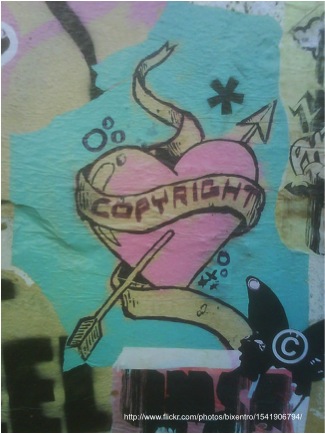| Today's Hours | 8am – 4:30pm |
|---|
| Today's Hours | 8am – 4:30pm |
|---|
Before we finish, we've got one last topic to cover: the ethical use of information. This isn't a formal step of the research process, but rather an approach to research that ensures that you're using information in a way that's legally and morally on the up and up.

The resources you find during the research process -- scholarly articles, books, streaming video -- didn't just magically appear on the internet for your use. Somebody imagined them, created them, and distributed them. Someone owns them. These resource owners are obviously happy to share their stuff with the world; otherwise, you wouldn't have stumbled across them during your search. But "sharing" is not the same thing as "giving away for free." We're going to talk about some of the rules that govern when and how to use other people's resources in your paper.
This brings us to the topic of plagiarism. Put simply, plagiarism is stealing someone's ideas and presenting them as your own. This is why we need citations -- if we use someone else's words or ideas in our paper, we need to give them credit.
Here's the tricky thing about plagiarism: it's easy to do accidentally. You might read an article with content that really resonates with you, and then excitedly include some of those ideas in your paper without even realizing it. Even if your intentions were pure, plagiarism is serious.
Avoid plagiarism by citing a work when you:
This is a complex topic; if you have questions about it, more information is available here, here, and here. Okay, let's lighten the mood: here, watch this totally insane video about plagiarism from the University of Bergen in Norway. (Make sure you use the CC button to turn on the closed captioning.)
So remember how we said that someone created, distributed, and owns the resources you'll use for your research paper? When you find a resource, especially one on the so-called "free web," it's tempting to think you can do anything you want with it. As you've probably guessed, that's not the case.
What we're getting at here is the idea of copyright. All those resources -- books, articles, videos, images -- are considered the "intellectual property" of their owners, and these copyright holders enjoy legal protection via the Copyright Law of the United States. This means that if you use a resource without getting permission, the copyright holder can take action.

Don't worry: no one is expecting you to contact the author of that article you found and ask permission to use it in your undergraduate research paper. The Copyright Law of the United States also includes something called Fair Use, which basically allows us to use copyrighted materials for certain purposes including:
When people use copyrighted material under Fair Use, they are doing so in a way that doesn't take money away from the copyright holder.
So what kind of uses aren't covered by Fair Use?
Just because you're a student doesn't mean all uses are okay! And just because you found it on the free web doesn't mean that it's not covered by copyright.
This is a confusing topic that's complicated by the web, where it's much easier to distribute copyrighted material. Scanning The Hunger Games and posting it online financially harms the publisher. Citing the book in your research paper doesn't. To see how complicated this really is, review the U.S. Copyright Law, but to get your head around it at a more appropriate level, read this brief description of Fair Use.
Fair Use is helpful not just in academia, but in creative ventures as well. Fair Use is what makes it okay to create song mash-ups, parodies, and those YouTube videos where enthusiastic Twilight fans set their favorite Edward and Bella moments to music. This video explores the artistic side of Fair Use:
Although using intellectual property in your assignments is a normal part of research and covered by Fair Use, you need to think about how you're finding, using, and citing information. As long as you give credit where it's due, and don't cause financial damage to a copyright holder, everything will be fine!
End of Module 4